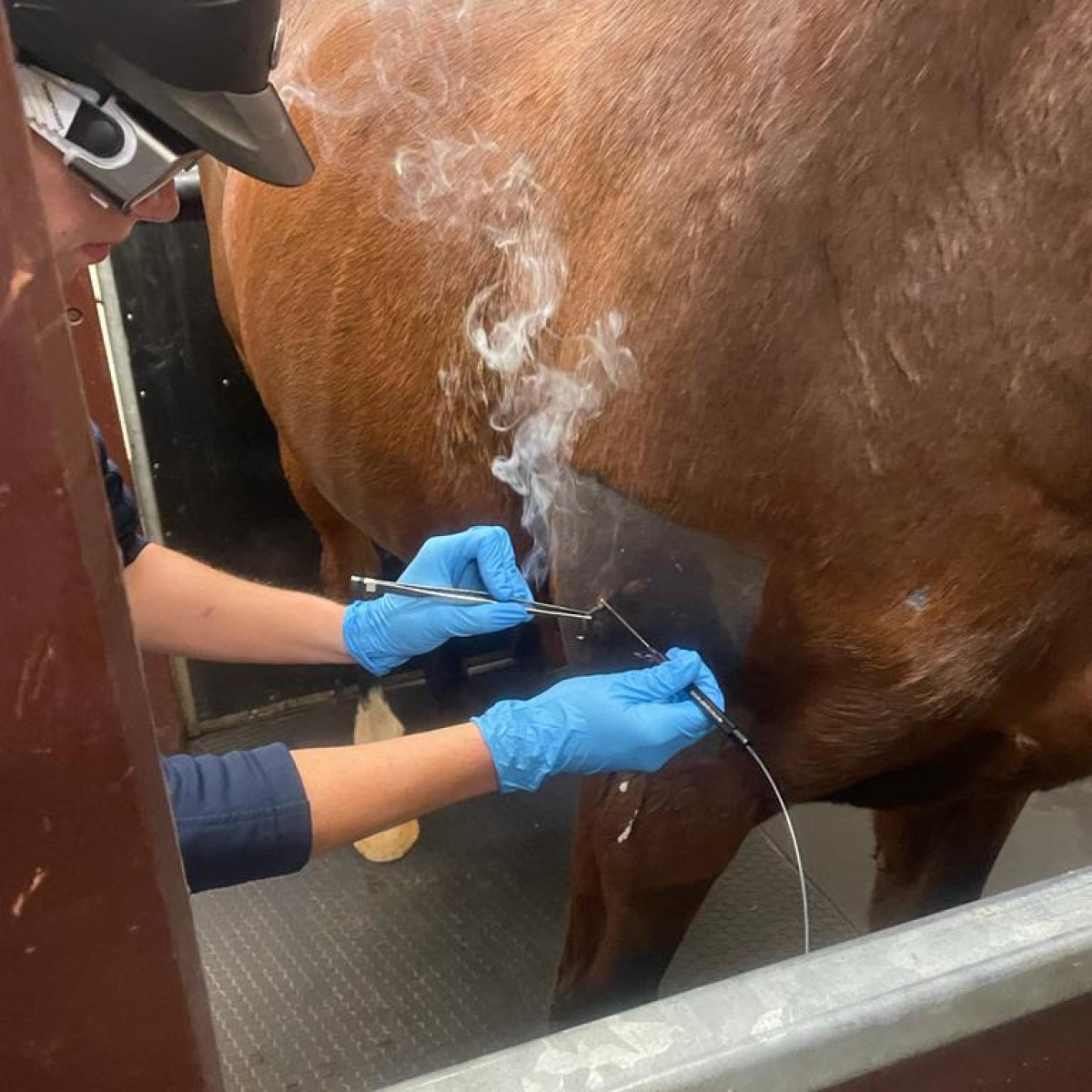Exactly How Laser Therapy in Horse Treatment Is Revolutionizing Vet Treatment for Equines
Laser therapy has actually become a transformative approach in equine vet treatment, supplying a non-invasive remedy that quickens healing and improves overall health. Leveraging accurate light wavelengths, this advanced therapy promotes mobile regrowth, lowers swelling, and alleviates pain. Its efficacy extends from musculoskeletal injuries to chronic conditions like osteo arthritis, significantly improving movement and life top quality for equines. The mobility and convenience of laser treatment devices additionally emphasize their growing indispensability among veterinarians. As we discover the detailed mechanics and real-world successes, the profound effect on equine clinical techniques ends up being progressively noticeable.
Understanding Laser Treatment

The modern technology behind laser therapy is grounded in the principle of photochemistry, where photons are taken in by chromophores within cells, causing boosted ATP production and modulation of responsive oxygen species (Equine Therapy). This, subsequently, advertises cellular spreading, decreases inflammation, and accelerates healing. Veterinary specialists make use of different kinds of lasers, including low-level lasers (LLLT) and high-power Course IV lasers, relying on the particular therapeutic purposes and the nature of the equine condition being treated
Different laser wavelengths and power settings are thoroughly selected to target various tissue midsts and attain wanted professional end results. Safety and security procedures are vital, as incorrect usage can lead to thermal damage or suboptimal therapeutic effects. Hence, a comprehensive understanding of laser treatment's devices and applications is vital for its efficient application in equine veterinary technique.
Advantages for Horse Wellness
The myriad benefits of laser treatment for equine health incorporate boosted healing, discomfort reduction, and enhanced wheelchair. This innovative therapy technique leverages certain wavelengths of light to pass through cells, boosting mobile feature and advertising rapid tissue repair work. The non-invasive nature of laser treatment ensures minimal stress and pain for the horse, assisting in a smoother recovery process.
Boosted healing is one of the foremost advantages, as laser therapy speeds up mobile regrowth and collagen synthesis. Discomfort decrease is attained via the anti-inflammatory effects of laser therapy, which decreases swelling and decreases the production of pain-inducing chemicals.
By minimizing inflammation and discomfort, and boosting tissue repair work, laser therapy aids in recovering joint feature and muscular tissue flexibility. Thus, laser treatment stands as a transformative device in modern horse vet care.
Usual Problems Treated
Laser treatment has arised as a flexible therapy choice for a range of typical equine conditions. In addition, laser therapy is effective for conditions like osteoarthritis, where it assists mitigate joint inflammation and promote tissue fixing.
Wound why not check here management is an additional area where laser therapy has actually shown considerable assurance. Chronic wounds or slow-healing ulcers can be specifically challenging in steeds, but laser therapy enhances mobile regrowth and improves blood flow, hence accelerating the recovery procedure. Furthermore, laser therapies have actually been efficiently utilized in taking care of unguis conditions such as laminitis and abscesses, easing pain and promoting quicker recuperation.

Innovation Behind Laser Therapy
Beyond the myriad conditions treatable with laser treatment, the modern technology itself qualities more detailed assessment. At the heart of laser treatment is making use of specific wavelengths of light to penetrate tissues and elicit biological reactions. These wavelengths, usually ranging from 600 to 1000 nanometers, are selectively absorbed by chromophores in the skin, muscular tissue, and various other tissues, instigating a waterfall of mobile events.
Laser devices made use of in veterinary medicine often make use of low-level laser treatment (LLLT) or cool laser therapy. Unlike high-powered surgical lasers, these tools operate at reduced power levels, enhancing restorative benefits while reducing thermal damages. The power from the laser light stimulates adenosine triphosphate (ATP) manufacturing, improves cellular metabolic process, and speeds up cells repair service processes.

Success Stories and Instance Studies

Showcasing the substantial advantages of laser treatment, countless success stories and study illuminate its transformative influence on equine wellness. One such case entails a thoroughbred racehorse struggling with chronic tendonitis. Traditional therapies generated minimal enhancement, yet after integrating laser therapy into the routine, the steed exhibited substantial decreases in inflammation and discomfort within weeks, inevitably going back to competitive racing.
Another engaging instance includes a dressage horse identified with serious neck and back pain, limiting its efficiency. A vet group employed low-level laser therapy (LLLT) to target the swollen locations, leading to marked improvement in adaptability and a remarkable decline in pain. Over several sessions, the horse regained its peak form, showcasing the efficiency of laser treatment in dealing with musculoskeletal concerns.
Furthermore, a research study conducted at a leading equine facility analyzed 50 horses with numerous soft tissue injuries treated with laser treatment. The outcomes were striking: 85% of the steeds demonstrated accelerated healing times and improved mobility. These situations underscore the convenience and efficiency of laser therapy in equine medication, offering a non-invasive, scientifically-backed strategy to enhancing recuperation and performance in horses.
Conclusion
Laser treatment is changing equine veterinary care by providing a non-invasive treatment that increases healing, lowers inflammation, and alleviates discomfort. With its effectiveness in treating a variety of conditions, from bone and joint injuries to persistent conditions like osteo arthritis, this technology substantially enhances equine health and mobility. The transportability and flexibility of laser therapy even more emphasize its transformative influence on vet techniques, solidifying its Continued function as an essential device in contemporary equine healthcare.